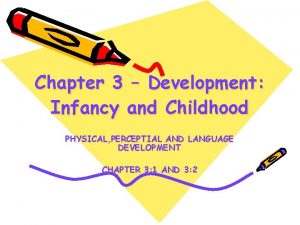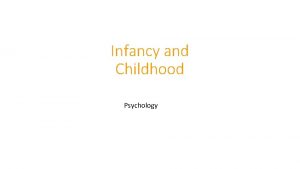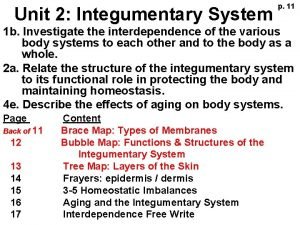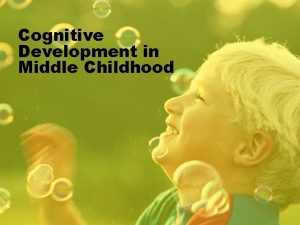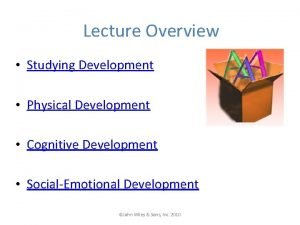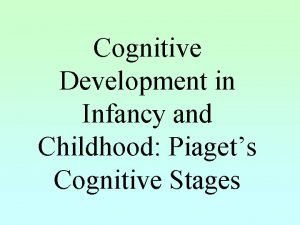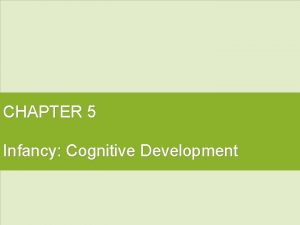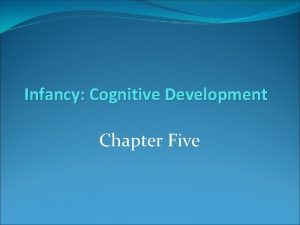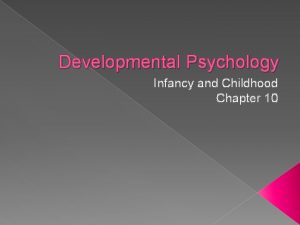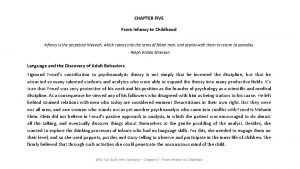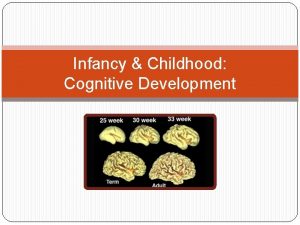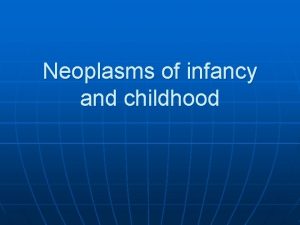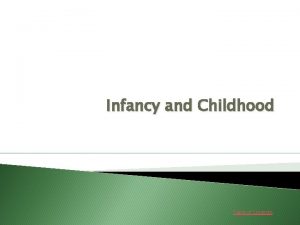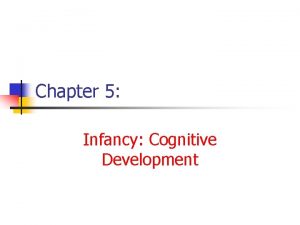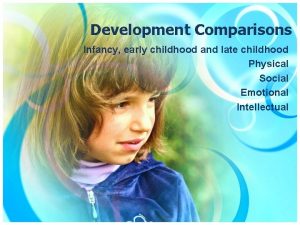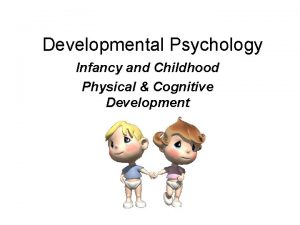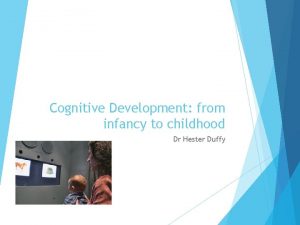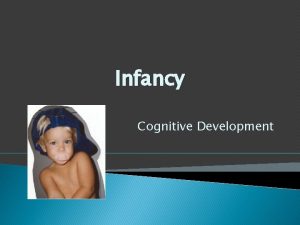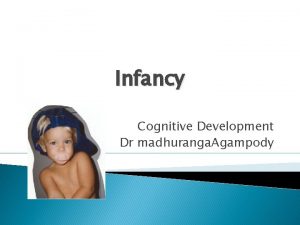Chapter 5 Cognitive Development in Infancy and Childhood



















- Slides: 19

Chapter 5 Cognitive Development in Infancy and Childhood: information Processing

Model of Human Information. Processing System Figure 6. 4 Copyright © 2012 Pearson Education, Inc. All Rights Reserved.

Teller Visual Acuity Cards

Facial Scanning Patterns 1 month vs 3 months

Attention § During the first year, infants pay attention to novel events § © Yi Jin | Dremstime. com

Fagan Test of Infant Intelligence

Attention § By Toddlerhood: § capable of intentional behavior and sustained attention improves

Joint Attention v Individuals focus on same object or event 5 -8 mos: v 10 -11 mos: v 12 mos: v WHY IMPORTANT? ? ?

Memory Operant conditioning research: n Infants’ memories increase dramatically during infancy and toddlerhood. n Memories move from highly context-dependent (mobile/surround) to increasingly context-free.

Increase in Retention in Two Operant Conditioning Tasks from 2 to 18 Months

Figure 6. 6 Infantile Amnesia Most of us cannot recall events before age 3. May be due to:

Categorization § By 6 months, infants can categorize based on two perceptual features (e. g. , shape and color). § By end of first year, more categories are conceptual.

Vygotsky’s Sociocultural Theory Social contexts (other people) contribute to cognitive development. Zone of Proximal Development – n Scaffolding promotes learning at all ages. n Cultural variations affect mental strategies taught and learned.

Social Origins of Make-Believe Play § Society provides children with opportunities to represent culturally meaningful activities in play. § Research indicates that makebelieve play is a result of readiness and experiences. § Adult participation leads to more complex play and teaches cultural values. © Monkey Business Images | Dreamstime. com Copyright © 2012 Pearson Education, Inc. All Rights Reserved.

Infant Intelligence Tests Bayley Scales of Infant Development § Suitable for children between 1 month and 3½ years The Bayley-III § § § The Cognitive Scale The Language Scale The Motor Scale The Social-Emotional Scale* The Adaptive Behavior Scale* * Rely on parental report Copyright © 2012 Pearson Education, Inc. All Rights Reserved.

Normal Distribution of Intelligence Test Scores Figure 6. 9 Copyright © 2012 Pearson Education, Inc. All Rights Reserved.

HOME Infant–Toddler Subscales Source: Bradley, 1994; Bradley et al. , 2001. Copyright © 2012 Pearson Education, Inc. All Rights Reserved.

High-Quality HOME Environment Checklist via observation and parental interview n n n Measured during first three years (45 items; 6 subscales) Extent to which parents talk with children especially important Predicts language, IQ (at 4 ½), and academic achievement n Genetic–environmental correlation?

IQ Improvement from Early Intervention Programs IQ scores of treatment and control children from infancy to 21 years in the Carolina Abecedarian Project. At 1 year, treatment children outperformed controls, an advantage consistently maintained through age 21. The IQ scores of both groups declined gradually during childhood and adolescence— a trend probably due to the damaging impact of poverty on mental development. (Adapted from Campbell et al. , 2001. ) Copyright © 2012 Pearson Education, Inc. All Rights Reserved.
 Ap psych schema
Ap psych schema Module 47 infancy and childhood cognitive development
Module 47 infancy and childhood cognitive development Proximodistal development
Proximodistal development Chapter 5 cognitive development in infancy and toddlerhood
Chapter 5 cognitive development in infancy and toddlerhood Social development in infancy and childhood
Social development in infancy and childhood Internally programmed growth of a child
Internally programmed growth of a child Module 46 infancy and childhood physical development
Module 46 infancy and childhood physical development Chapter 10 infancy and childhood
Chapter 10 infancy and childhood Chapter 10 infancy and childhood
Chapter 10 infancy and childhood Chapter 10 infancy and childhood
Chapter 10 infancy and childhood Chapter 9 early childhood cognitive development
Chapter 9 early childhood cognitive development Infancy and childhood psychology
Infancy and childhood psychology Lesson quiz 3-2 infancy and childhood
Lesson quiz 3-2 infancy and childhood Cognitive development in middle and late childhood
Cognitive development in middle and late childhood Infancy childhood adolescence adulthood old age
Infancy childhood adolescence adulthood old age Language development in middle childhood
Language development in middle childhood 3 stages of prenatal development
3 stages of prenatal development 6 life stages
6 life stages Definition of intellectual in health and social care
Definition of intellectual in health and social care Socioemotional development in infancy
Socioemotional development in infancy





